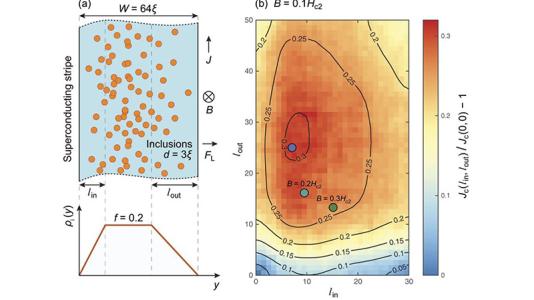
Scientific Achievement
Gained insight into the interplay between bulk pinning and edge barriers for vortex transport in mesoscopic superconducting strips and bridges.
Significance and Impact
Developed recipes to optimize configuration of the bulk pinning for the best performance.
Research Details
- Utilized large-scale time-dependent Ginzburg-Landau simulations of heterogenous pinning landscapes.
- Strategic defect distribution dramatically increases critical current in mesoscopic super-conducting strips.
- Uncovered the non-additive nature of geometrical and bulk pinning
Argonne National Laboratory seeks solutions to pressing national problems in science and technology. The nation’s first national laboratory, Argonne conducts leading-edge basic and applied scientific research in virtually every scientific discipline. Argonne researchers work closely with researchers from hundreds of companies, universities, and federal, state and municipal agencies to help them solve their specific problems, advance America’s scientific leadership and prepare the nation for a better future. With employees from more than 60 nations, Argonne is managed by UChicago Argonne, LLC for the U.S. Department of Energy’s Office of Science.
The U.S. Department of Energy’s Office of Science is the single largest supporter of basic research in the physical sciences in the United States and is working to address some of the most pressing challenges of our time. For more information, visit https://energy.gov/science.